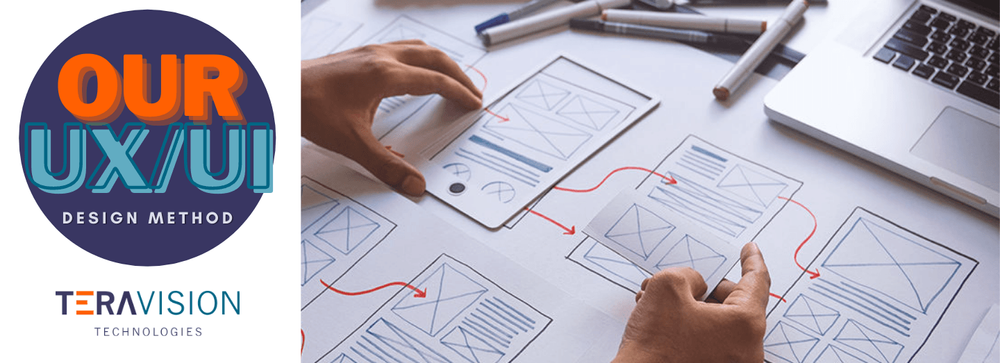There is Always a Starting Point
The abundant amount of resources that UX/UI designers have in terms of tools can make jumping into this process an overwhelming task. Mapping out a user’s experience with the app based on psychological analysis, creating the corresponding wireframes and then prototyping the UX design can be significantly tedious if you don’t know where to start.
No worries there! As a nearshore software development company, we already have our own tools, process and preferences ready to start creating a UX design that best suits your app’s business needs, and offers your users an excellent experience using them, courtesy of the members of our UX design team! Here are our favorite tools and methodology for the job!
Our Methodology
Design Thinking is a people-centered method and in our design team we use it to detect needs, define challenges, seek solutions and test those solutions until we obtain the best solution. Consequently, it is a very effective method for solving problems and that brings innovative results throughout the UX design process.
How do we apply it? Design Thinking is applied through a non-linear and iterative process (which can be repeated as many times as necessary), and focused on people (thinking about their true needs), which consists of 5 stages: Empathy, Definition, Ideation, Prototyping and Testing.
Our Tools
Design Thinking
- Miro and Milanote: These are our more creative tools that we like to use during the design thinking process. From organizing our projects to brainstorming sessions and polls for creative direction, these tools alongside Xmind gives us a roadmap towards an overall UX design proposition.
User Experience
- Xmind: This is a tool we use to design the website/app navigation flow. It’s a way for us to turn the client’s needs into a scheme format and validate that their needs are being met with the proposed flow. Its composition and visual presentation help us communicate with the client better, and generate feedback from them on the proposed UX design.
User Interface and Wireframes
- Figma, Adobe XD, and Sketch: These are our preferred tools for user Interface and Wireframe designing. Using all three in comparison to just one of them allows for our workflow to be adjustable to the needs of each client. Also, these tools allow you to create your assets from scratch, making the results more customizable compared to a tool like Balsamiq that works with templates.
Prototyping
- Invision: One key trait that Invision has is that all the tools we use integrate with it very well, so all you would need to do is simply import the wireframes from other tools and you can get to creating the prototype. Also, it shares a similar feature to Trello for tracking the progress of the wireframes. This way we can know when the client approves a wireframe or when its development is on standby, helping us organize our workflow and prioritize tasks.
Development Assets
- Zeplin: Like Invision, Zeplin integrates with all the tools we use to design the wireframes. This allows our developers to download any asset that they need, from icons to fonts, and reduces the overall margin of error while working with them. They have access to pretty much everything!
How Do We Test Our Designs?
Two words: User Research. It’s important to keep in mind exactly who the client wants to use their app or product. This way we make sure that our designs fulfill the needs of both the client and the end user. This is where user personas and tests come in handy to identify user needs. Finding profiles that closely match your identified personas to test your product becomes essential. Where we find these users changes in a case by case scenario, but as long as we keep this process in mind, it helps us to always be able to create adequate designs for the end user.
Once we find our users, we conduct testing with them. These tests help us to demonstrate with concrete facts the degree of efficiency and effectiveness to which people manage to use the product, and if they navigate through it as we expect them to. This testing process is also important as it helps us find and tackle problems before the product is made commercially available.
It is very important that we always keep in mind that we are NOT the end user, so we must listen to their needs to have a successful product.
What’s the Last Step?
The client tests our designs. Once approved, we hand over all assets needed for our development team to make it into a fully functional software product. We believe that intuitive, user-focused design is key to bringing an outstanding product to life. This is regardless of whether you’re working with an in-house team or a nearshore software development company. That’s precisely why our UX/UI Design process is always thorough and human centered.



